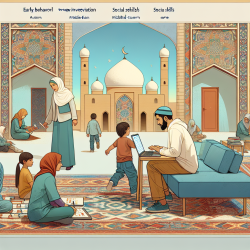Understanding Chromothripsis: A Key to Better Outcomes in Pediatric Therapy
As a speech-language pathologist, understanding the genetic underpinnings of developmental disorders can significantly enhance your practice. One such genetic phenomenon is chromothripsis, a complex chromosomal rearrangement that can have profound effects on development. This blog delves into recent research on chromothripsis, providing insights that can inform your therapeutic strategies and encourage further research.
What is Chromothripsis?
Chromothripsis is a phenomenon where chromosomes undergo massive shattering and reassembly, often leading to complex genetic rearrangements. This process can result in significant genetic variation, sometimes associated with developmental disorders. The study "Insertional translocation involving an additional nonchromothriptic chromosome in constitutional chromothripsis: Rule or exception?" by Kurtas et al. explores this phenomenon in detail.
Key Findings from the Research
- Chromothripsis can involve multiple chromosomes, leading to complex genetic rearrangements.
- Insertional translocations are often a marker of more complex rearrangements, rather than simple three-breakpoint events.
- The study found that both simple and complex unbalanced rearrangements might result from cryptic parental balanced chromothripsis.
Implications for Speech-Language Pathologists
Understanding chromothripsis can help practitioners identify potential genetic causes of developmental disorders in children. This knowledge can guide more targeted interventions and inform decisions about further genetic testing.
For example, if a child presents with unexplained developmental delays, considering chromothripsis as a potential underlying cause might lead to more comprehensive genetic testing. This can provide a clearer picture of the child's genetic makeup, allowing for more personalized therapy plans.
Encouraging Further Research
The complexity of chromothripsis highlights the need for further research in this area. Practitioners are encouraged to collaborate with geneticists and researchers to explore the implications of chromothripsis in developmental disorders. Such collaborations can lead to innovative therapeutic approaches and improved outcomes for children.
Conclusion
Chromothripsis represents a significant area of interest in understanding genetic contributions to developmental disorders. By integrating insights from genetic research into practice, speech-language pathologists can enhance their therapeutic strategies and contribute to the broader understanding of these complex conditions.
To read the original research paper, please follow this link: Insertional translocation involving an additional nonchromothriptic chromosome in constitutional chromothripsis: Rule or exception?










